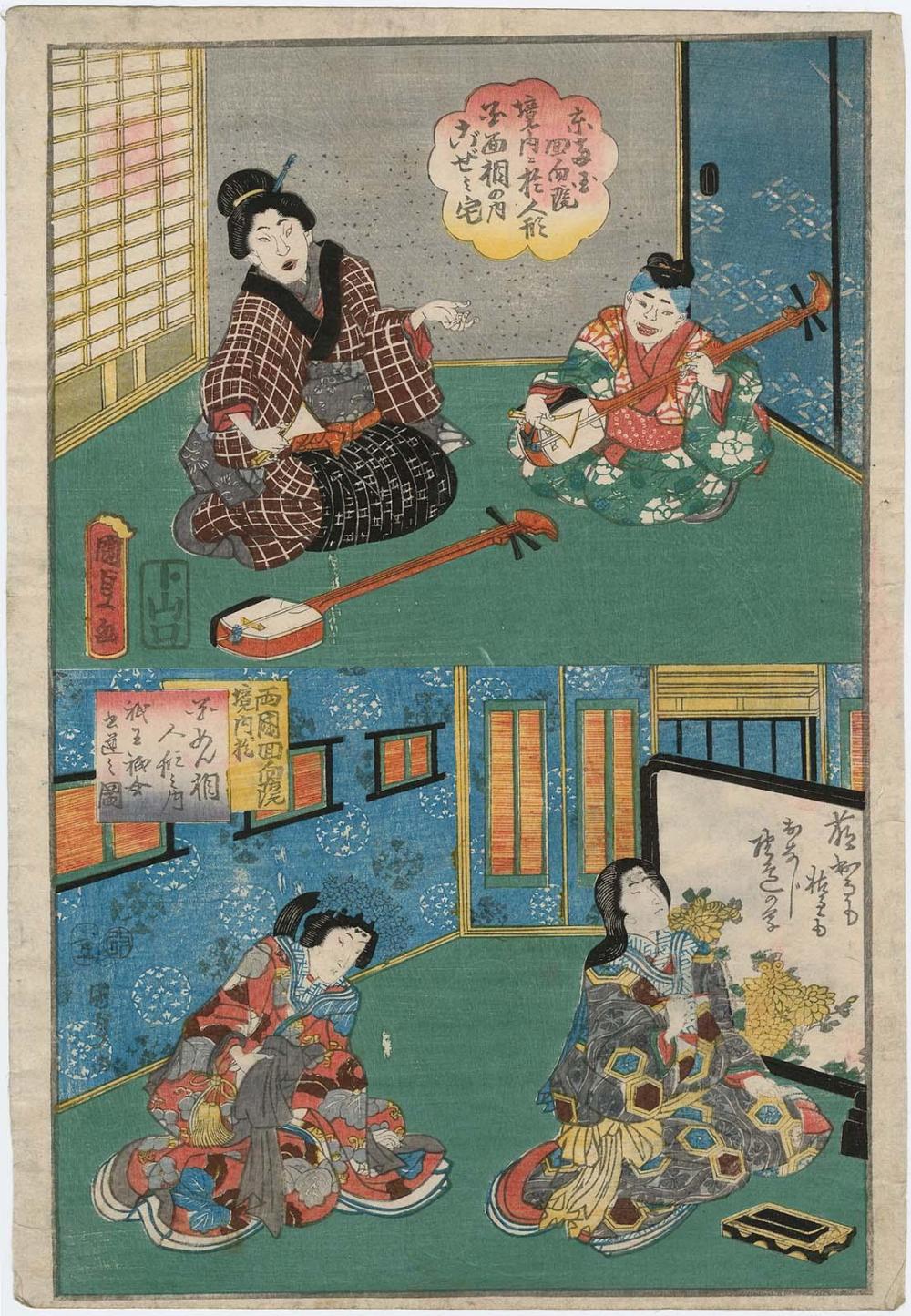Advanced Search 
「東両国回向院境内二於人形百面相の内 ごぜの宅」「両国回向院境内二於 百面相人形の内 祇王祇女出世の図」

Home of Blind Female Musicians (Goze no taku) (above) and Giô and Gijo Renouncing the World (Giô Gijo shusse no zu) (below), from the series Dolls with a Hundred Faces Displayed in the Precincts of the Ekô-in in Eastern Ryogoku (Higashi Ryôgoku Ekô-in keidai ni oite hyaku mensô ningyô no uchi)
「東両国回向院境内二於人形百面相の内 ごぜの宅」「両国回向院境内二於 百面相人形の内 祇王祇女出世の図」
Utagawa Kunisada II (Kunimasa III, Toyokuni IV) (Japanese, 1823–1880)
Publisher: Yamaguchiya Tôbei (Kinkôdô) (Japanese)
Publisher: Yamaguchiya Tôbei (Kinkôdô) (Japanese)
Japanese
Edo period
1857 (Ansei 4), 4th month
Medium/Technique
Woodblock print (nishiki-e); ink and color on paper
Dimensions
Vertical ôban; 35.6 × 24.6 cm (14 × 9 11/16 in.)
Credit Line
William Sturgis Bigelow Collection
Accession Number11.17369
NOT ON VIEW
CollectionsAsia, Prints and Drawings
ClassificationsPrints
Catalogue Raisonné
http://blog.livedoor.jp/misemono/archives/cat_50049088.html; Ono, Misemono fûzoku zushi (1977), p. 381
DescriptionThe series shows an exhibition of lifesized dolls of women in many aspects, held at the Ekô-in temple. The MFA has a flier for the exhibition, 11.45587, and four prints from the series, with two designs each: 11.17369, 11.17370, 11.17371, 11.22723.
Signed
Kunisada ga, in toshidama cartouche
国貞画(年玉枠)
国貞画(年玉枠)
Marks
Censor's seals: aratame, Snake 4 (?)
No blockcutter's mark
改印:改、巳四
彫師:なし
No blockcutter's mark
改印:改、巳四
彫師:なし
ProvenanceBy 1911, purchased by William Sturgis Bigelow (b. 1850 - d. 1926), Boston [see note 1]; 1911, gift of Bigelow to the MFA. (Accession Date: August 3, 1911)
NOTES:
[1] Much of Bigelow's collection of Asian art was formed during his residence in Japan between 1882 and 1889, although he also made acquisitions in Europe and the United States. Bigelow deposited many of these objects at the MFA in 1890 before donating them to the Museum's collection at later dates.
NOTES:
[1] Much of Bigelow's collection of Asian art was formed during his residence in Japan between 1882 and 1889, although he also made acquisitions in Europe and the United States. Bigelow deposited many of these objects at the MFA in 1890 before donating them to the Museum's collection at later dates.
